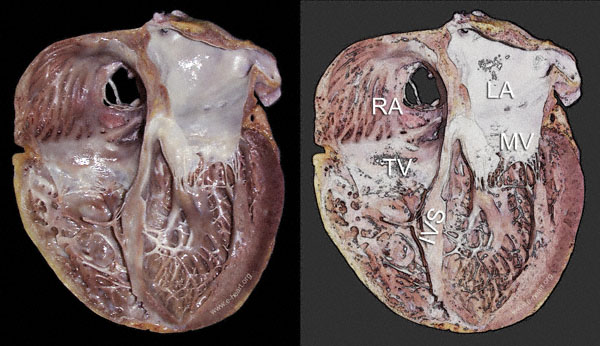Dilated Cardiomyopathy - DCM - I
Dilated cardiomyopathy is the most common type of cardiomyopathy. It is also called congestive cardiomyopathy. In Dilated Cardiomyopathy the heart is enlarged in size and its walls tend to be thin (thus the term dilated), kind of like a balloon which has been blown up too much. The normal heart pumps blood throughout the body by contracting (pumping) and relaxing (to allow filling of its chambers) during the cycle of each heart beat. In Dilated Cardiomyopathy, the enlargement of the ventricles results in decreased performance in the “pumping” of blood when the heart squeezes. Some of the causes of Dilated Cardiomyopathy have been identified. These include: viral infection affecting the cardiac muscle, toxic effect of drugs or other toxic chemicals, and sometimes it occurs in association to pregnancy. In the majority of patients (about 80%) however, the precise cause of the cardiomyopathy cannot be determined. It can affect individuals at any age, but the majority of patients diagnosed are middle age or young adults. Genetic diseases are beginning to be identified that seem to be the cause of DCM in some individuals and/or families.

This image shows a four chamber (coronal cut) of a dilated cardiomyopathy. All chambers of the heart are dilated. The left ventricular free wall is also thinned. There is no evidence of scarring.
Comparison of a normal heart to a dilated cardiomyopathy heart readily shows a gobular shape with dilatation of the chambers.
Back to cardiomyopathy.

